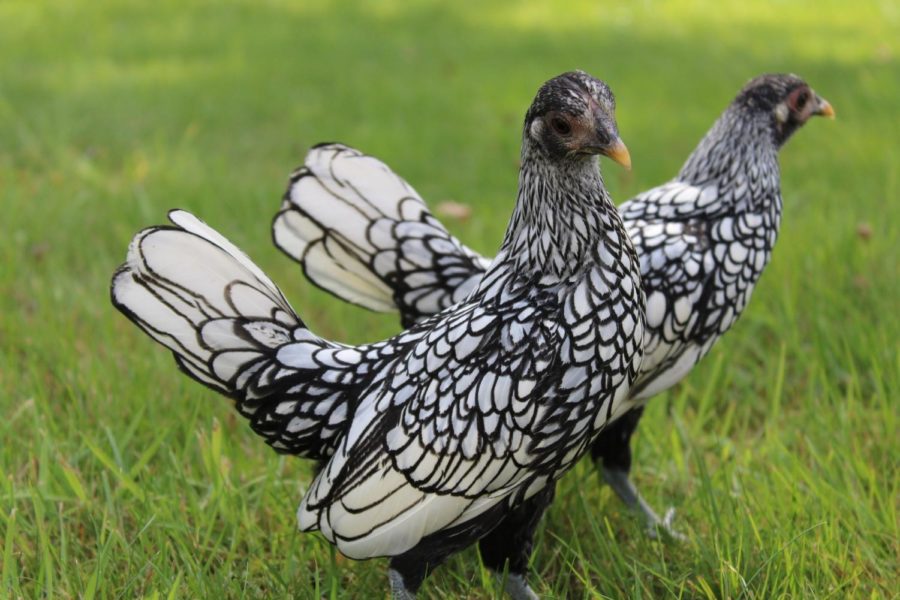LAUGHING IN THE GOLDEN YEARS – The Bantam Chickens’ Cure
April 1, 2023

My mother did not want my brother, Wally or me to catch the simple communicable diseases that most children came down with when I was a small girl. Wally had been seriously ill as a toddler, and mom did not want him to develop anything that might cause him not to thrive. She kept us away from other children when she knew they were sick.
Still, we attended the local public school, and despite mom’s diligence, on the first day of Easter vacation, I came down with chicken pox. I don’t think we would have known that I had that disease, but I told my mom that I felt “shivery,” and she checked my temperature. She looked me all over. There were two poxes on my tummy and one on the side of my knee. In a few days, I felt fine. On the day that I returned to school, Wally came down with chicken pox, probably a gift from me.
Unlike me, Wally was extremely sick from chicken pox. The pox sprang up all over him from head to toe, and some were so large that they fused together. One on his neck became infected. In those no-antibiotic days, the infection alone might have killed him. My mother spent every day thereafter keeping Wally alive. He stopped eating and mom made chocolate milk for him and did her best to coax him to eat. Somedays he would eat a little Jell-o but not much else. He was lethargic and wanted to sleep.
One day when I came home from school, Wally was seated in a chair on the back stoop. He was wrapped up in blankets and at his feet were two tiny chickens. Knowing how much Wally loved anything miniature, my dad had gotten two little bantam chickens, a hen and a rooster from a farm nearby.
“Do they have names?” I asked him.
“The little hen is Tura-Lura and the rooster is Henny-Penny,” he replied.
Before long, Tura-Lura and Henny-Penny would come when my brother called them. Soon they were so tame that he could easily pet them.
Meanwhile, Wally was still not eating much of anything. He was thin and gaunt looking, and I knew my mother was really worried about him. Actually, so was I. He was my constant companion when he was well.
One morning my father arrived at the house from doing the outdoor chores and said, “Look what Tura-Lura has done for you, Wally.” And he opened his hand to show us a tiny speckled egg.
My mother immediately said, “Oh, Wally, Tura-Lura wants you to eat.” That was the first day that we all saw him really eat something. It might have been a miniature egg, but it was protein and mom, dad and I were all smiling because Wally actually ate.
Dad brought in a tiny egg each day for more than a week, and it seemed to make Wally want to eat more. He soon was eating peanut butter and then oatmeal for breakfast. It was very odd, but Tura-Lura did not lay any more eggs that spring.
My brother survived chicken pox and soon returned to school. My father said he would look after the bantam chickens, and they were around all summer. Not long ago, I called my brother and asked him what eventually had happened to the bantams, but he could not recall and neither could I.
Shopping for my groceries in a large supermarket last month, I noticed a see-through egg carton with a dozen speckled quail eggs. Suddenly I was transported back to the time when dad brought that tiny egg into the kitchen for Wally to eat. I quickly concluded that Tura-Lura never laid an egg. My father must have gone to a farm where a man he knew was raising quail and purchased some quail eggs. Chicken eggs, no matter how small, are not speckled, but neither Wally nor I knew that. My dad had gone to incredible lengths to help my mother with that insurmountable problem of getting a sick child to eat, and it worked.










